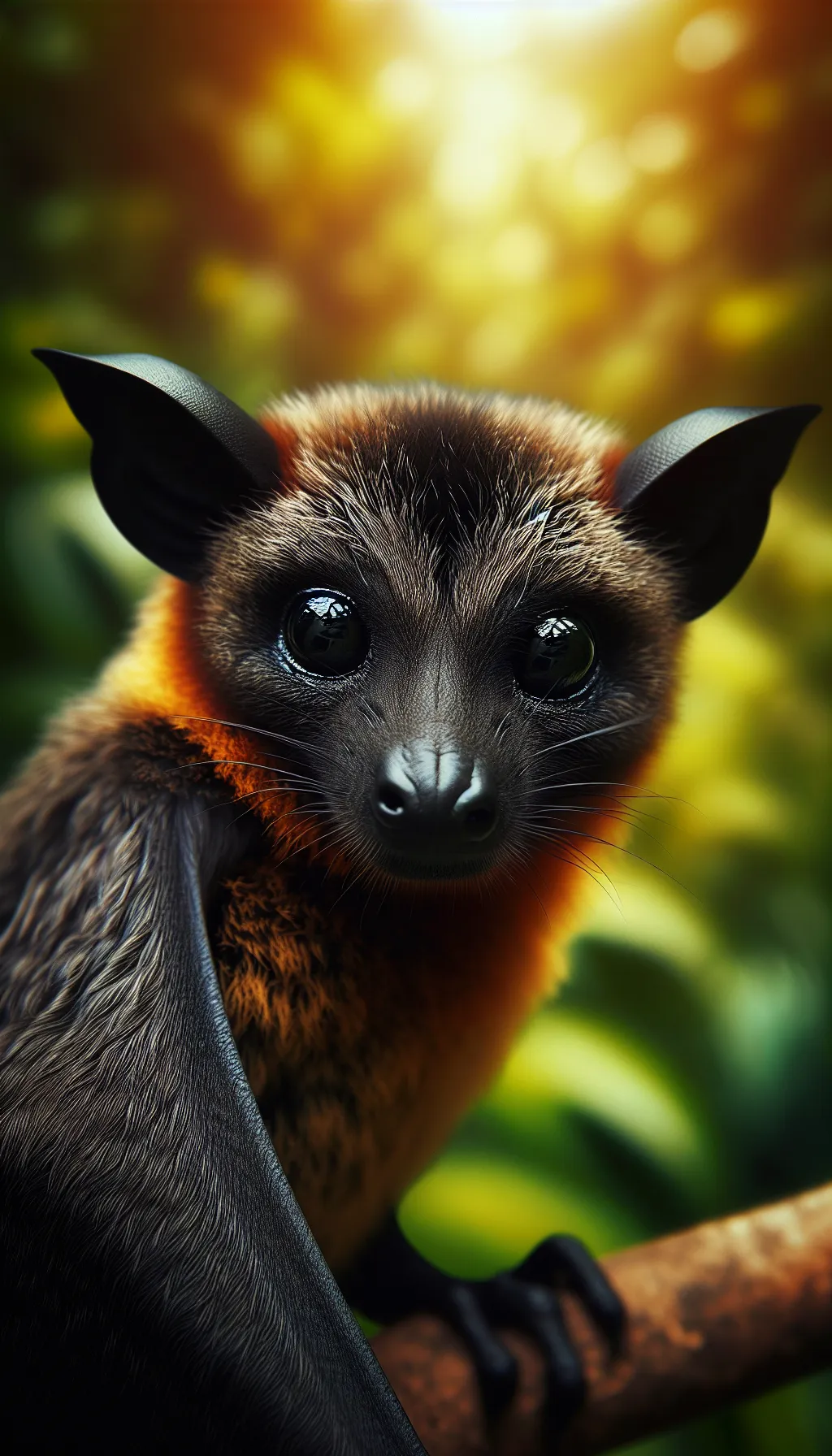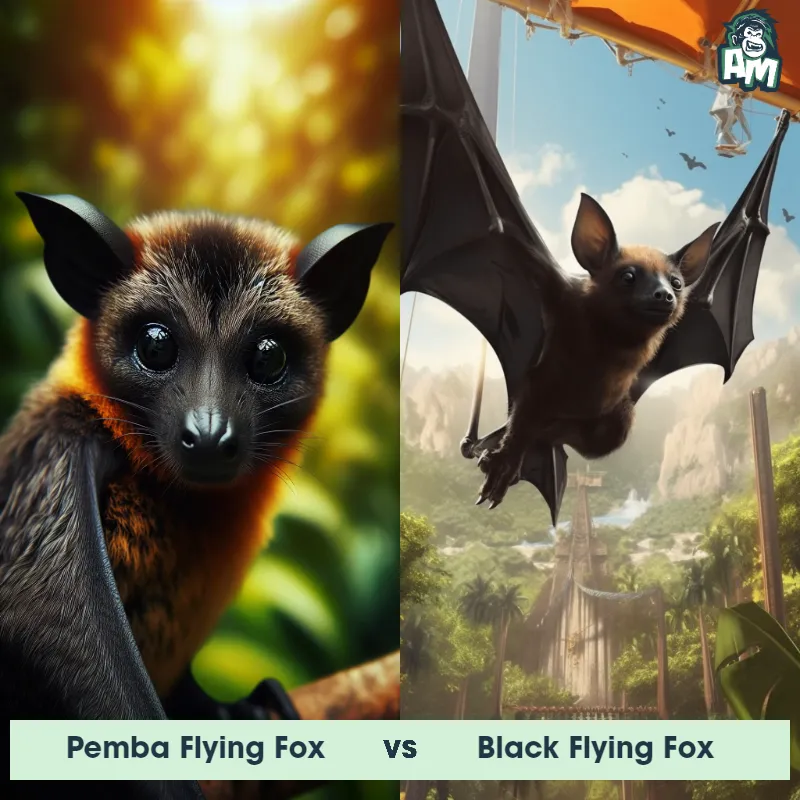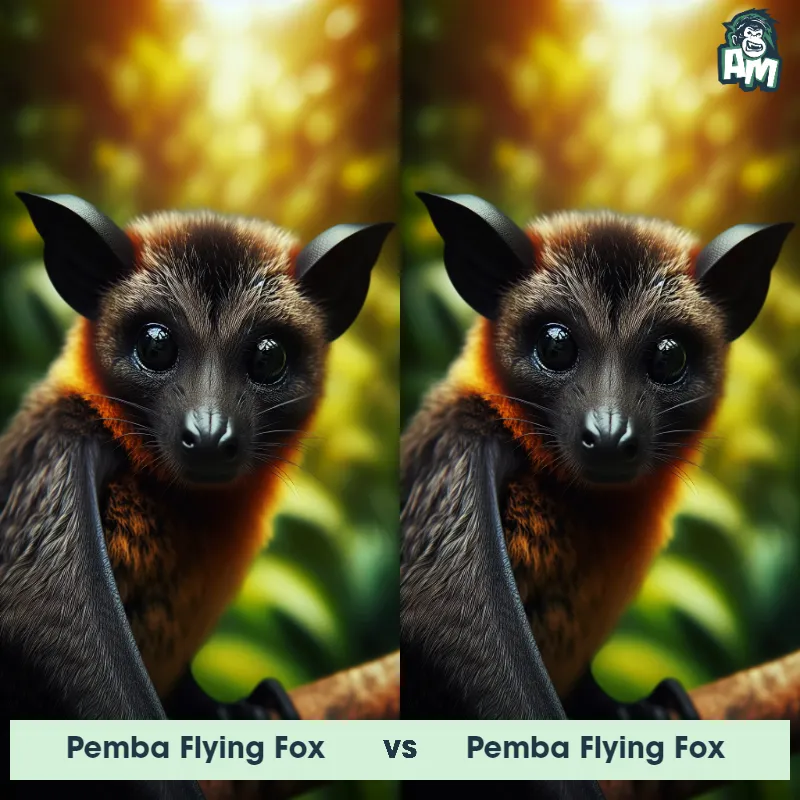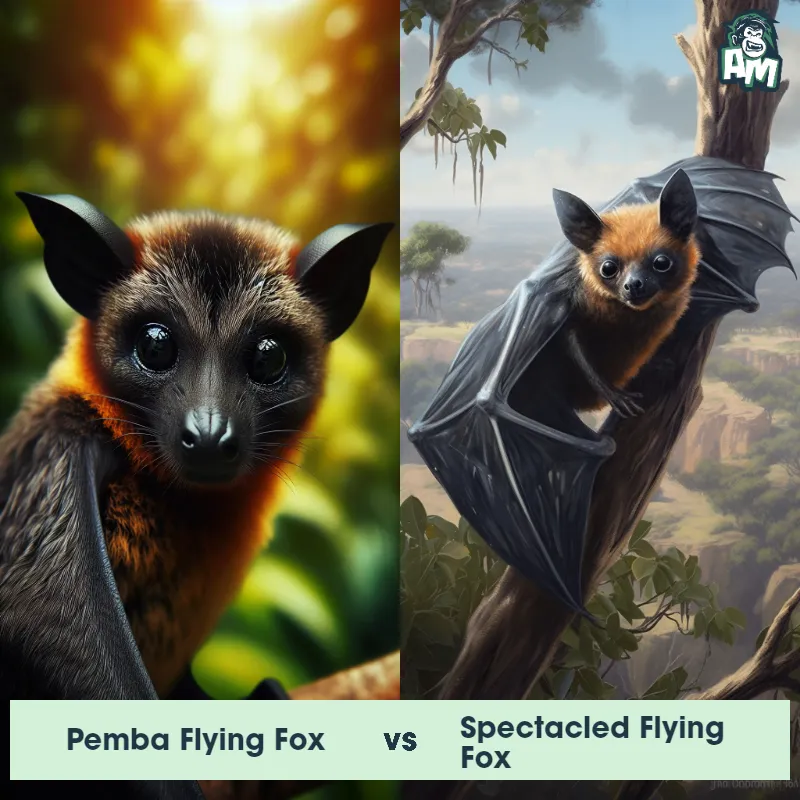The Pemba flying fox
The Pemba flying fox, also known as the Pemba fruit bat, is a species of bat found on the island of Pemba, off the coast of East Africa. It is one of the largest species of fruit bats, with a wingspan of up to 1.5 meters and a weight of around 600 grams. The bat has long, pointed wings and a dark brown to black fur, which helps it blend in with the dense vegetation of its forest habitat. It is primarily herbivorous, feeding on fruits and flowers, and is crucial for seed dispersal in the ecosystem.

| Pemba flying fox | |
|---|---|
| Size | Wingspan up to 1.5 meters (4.9 feet) |
| Weight | Unknown |
| Speed | 15mph (24km/h) |
| Key Strength | Unknown |
| Biggest Weakness | Unknown |
| Scientific Name | Pteropus voeltzkowi |
| Family | Pteropodidae |
| Habitat | Forest and mangrove habitats |
| Geography | Pemba Island in the Zanzibar Archipelago, off the coast of Tanzania |
| Diet | Nectar, pollen, and fruits |
| Lifespan | 10 years - 12 years |

The Pemba flying fox
The Pemba flying fox, also known as the Pemba fruit bat, is a species of bat found on the island of Pemba, off the coast of East Africa. It is one of the largest species of fruit bats, with a wingspan of up to 1.5 meters and a weight of around 600 grams. The bat has long, pointed wings and a dark brown to black fur, which helps it blend in with the dense vegetation of its forest habitat. It is primarily herbivorous, feeding on fruits and flowers, and is crucial for seed dispersal in the ecosystem.
Fun Fact: The Pemba flying fox is highly social and forms large roosting colonies, with hundreds or even thousands of individuals gathering together in a single roosting site.
| Pemba flying fox | |
|---|---|
| Size | Wingspan up to 1.5 meters (4.9 feet) |
| Weight | Unknown |
| Speed | 15mph (24km/h) |
| Key Strength | Unknown |
| Biggest Weakness | Unknown |
| Scientific Name | Pteropus voeltzkowi |
| Family | Pteropodidae |
| Habitat | Forest and mangrove habitats |
| Geography | Pemba Island in the Zanzibar Archipelago, off the coast of Tanzania |
| Diet | Nectar, pollen, and fruits |
| Lifespan | 10 years - 12 years |
Pemba flying fox Matchups
We use AI to simulate matchups between the Pemba flying fox and other animals. Our simulation considers size, strength, and natural predatory behaviors to determine the most likely outcome.
Pemba flying fox: Diet, Predators, Aggression, and Defensive Behaviors
What do Pemba flying foxes eat?
Pemba flying foxes primarily feed on fruits, nectar, and pollen. They are important pollinators in their native habitats, as they consume and spread the seeds of various fruiting trees. In times of scarcity, they may also eat leaves and flowers.
Do Pemba flying foxes have any predators?
Yes, Pemba flying foxes have predators such as birds of prey, snakes, and humans. Birds of prey may target them while in flight, while snakes and humans may pose a threat when they are roosting during the day.
Are Pemba flying foxes aggressive?
Pemba flying foxes are not known to be aggressive towards humans or other animals. They are generally docile and peaceful creatures that prefer to avoid conflicts.
Do Pemba flying foxes fight amongst themselves?
Although Pemba flying foxes may engage in mild disputes over food or roosting spots, they do not typically engage in physical fights. They are social animals that rely on group cohesion for survival.
How do Pemba flying foxes defend themselves against predators?
Pemba flying foxes rely on their agility and speed to escape from predators. When threatened, they may take to the air and use their impressive flying abilities to evade capture. They also have keen senses of sight and hearing to detect potential threats.
What is the biggest weakness of Pemba flying foxes in a fight?
The biggest weakness of Pemba flying foxes in a fight is their relatively small size and fragile wings. Despite their impressive flying skills, they are vulnerable to larger predators that can easily overpower them in close combat. Additionally, their dependency on group living means that isolation from their colony can leave them more exposed to danger.
Fun Fact: Unlike most bats, the Pemba flying fox relies heavily on its sense of sight rather than echolocation to navigate and find food, thanks to its large eyes and good eyesight.
Fun Fact: The conservation status of the Pemba flying fox is critically endangered, with a population decline of more than 80% over the past three generations due to habitat loss and hunting. Efforts are being made to protect and preserve its remaining habitat and promote sustainable conservation measures.














